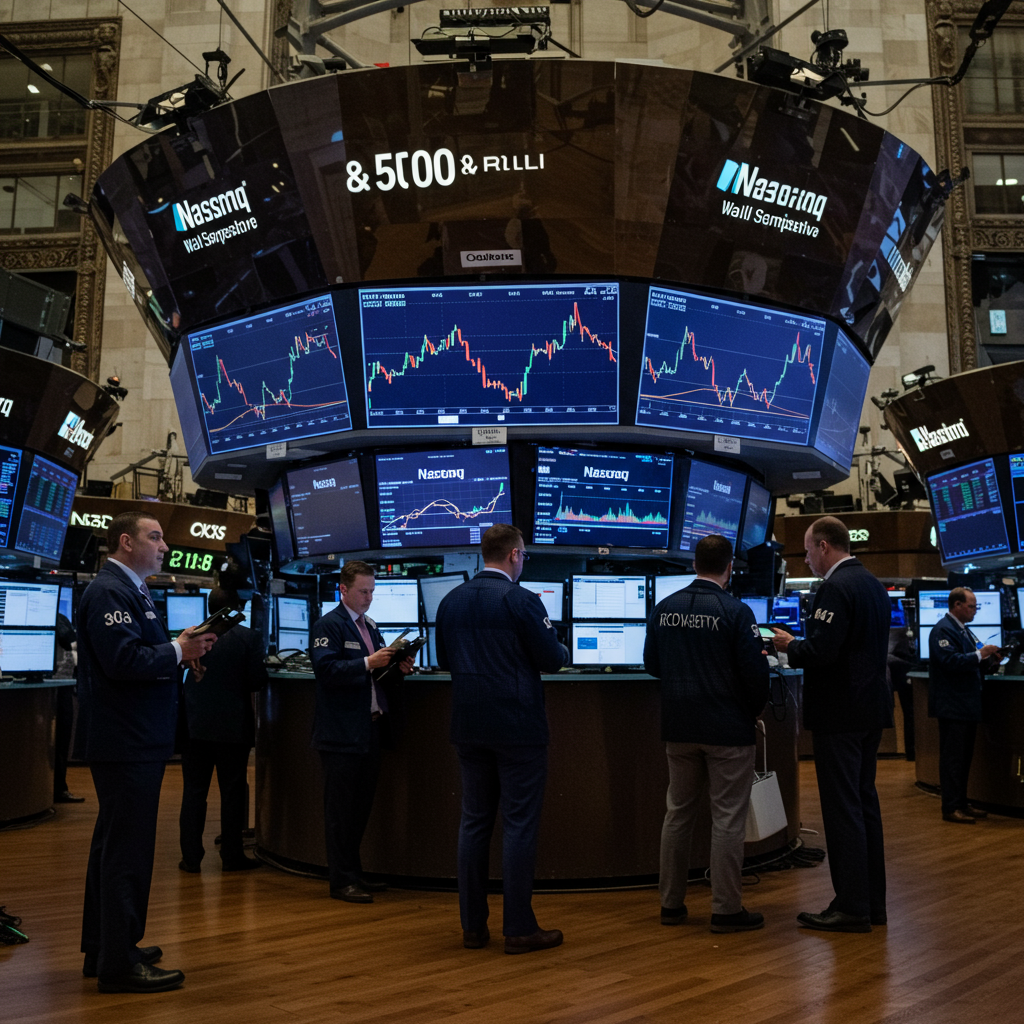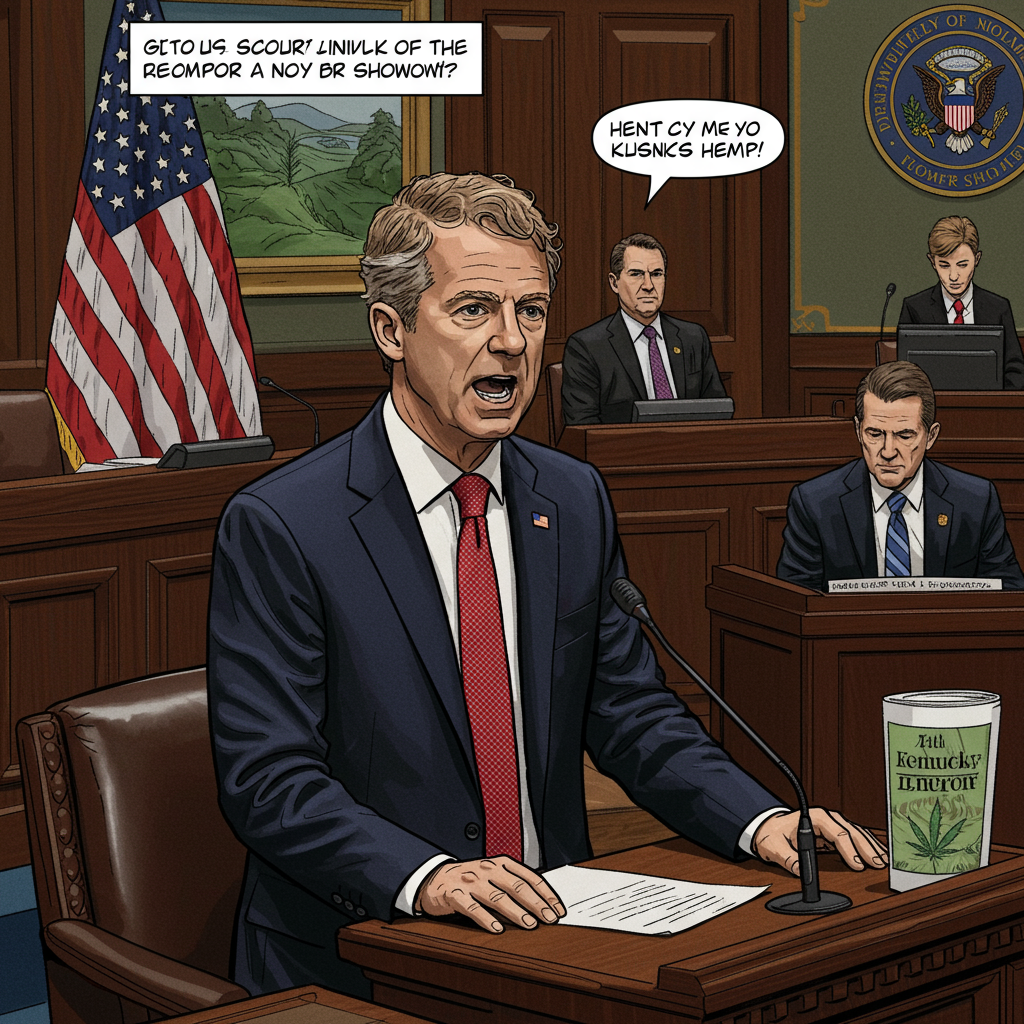On a day marked by soaring optimism yet underlying caution, the Wall Street rally powered major U.S. stock indexes to new record highs. Investors keenly watched progress on a potential U.S.-European Union trade agreement and speculated on the Federal Reserve’s next moves. This combination of factors painted a complex picture of market sentiment, driven by both immediate gains and future uncertainties.
The S&P 500 and Nasdaq Composite indices both closed at unprecedented levels, underscoring a period of robust market performance. This impressive ascent was largely fueled by positive corporate earnings reports and the ongoing anticipation of new global trade deals. However, beneath the surface of record-breaking numbers, analysts advised a degree of vigilance, highlighting the potential for market disappointment should anticipated agreements falter.
Market Surges on Trade Optimism and Strong Earnings
The financial markets on July 25, 2025, responded enthusiastically to a blend of encouraging news. A primary driver was the growing hope for a swift resolution to trade discussions between the United States and the European Union. Reports suggested that a framework trade deal could be on the horizon as early as that weekend, following planned discussions between European Commission President Ursula von der Leyen and U.S. President Donald Trump in Scotland. While President Trump had earlier set the odds of a deal at an even “50-50,” the sheer possibility ignited investor confidence.
Adding further momentum to the Wall Street rally were several standout corporate performances. Deckers Outdoor, the company behind popular brands like UGG boots and Hoka sneakers, saw its shares surge by an impressive 12%. This substantial gain came after the company reported quarterly results that exceeded market expectations, driven by strong international demand for its products. Such positive earnings reports often serve as a strong indicator of economic health and directly contribute to market uptrends.
Key Index Performance
On this pivotal trading day, the major indices showcased significant gains:
S&P 500: Advanced 0.46% to 6,392.93 points, setting a new record.
Nasdaq Composite: Climbed 0.35% to 21,132.60 points, also reaching an all-time high.
- Dow Jones Industrial Average: Rose 0.48% to 44,906.51 points, positioning all three major indexes for weekly gains.
These figures underscore a broad market strength, with nine out of the 11 S&P 500 sector indexes closing higher. Industrials led the charge with a 0.91% gain, closely followed by a 0.87% rise in materials.
Shifting Investor Sentiment and Cautionary Notes
Despite the palpable excitement over record highs and potential trade breakthroughs, a nuanced perspective emerged from market experts. Thomas Martin, a Senior Portfolio Manager at GLOBALT in Atlanta, expressed a degree of skepticism regarding the market’s high expectations for trade agreements. He cautioned that while the market was “anticipating that the deals are going to get done,” there was “more room for disappointment than there is upside” if these agreements didn’t materialize as hoped.
This sentiment highlights a crucial aspect of investor psychology: the market often “prices in” anticipated events. When these events unfold positively, the impact might be limited as it’s already accounted for. Conversely, any deviation or negative outcome can trigger a disproportionately sharp downside reaction. Understanding this dynamic is key for investors navigating periods of high optimism and significant anticipation.
The Federal Reserve’s Influence
Beyond trade, the Federal Reserve’s monetary policy remained a central point of focus for investors. Policymakers were expected to hold interest rates steady in the coming week, carefully weighing the potential impact of tariffs on inflation. The ongoing debate about interest rate adjustments has significant implications for borrowing costs, corporate profitability, and overall economic growth, making the Fed’s stance a critical market driver.
Traders, using tools like CME’s FedWatch, estimated about a 60% probability of a rate cut by September. This expectation gained further traction from President Trump’s public comments. He expressed his belief that Fed Chair Jerome Powell might be ready to lower rates, following earlier calls for the central bank to slash rates. Such presidential remarks often add to market speculation, emphasizing the intersection of political rhetoric and economic policy. The Fed’s independence is a cornerstone of its effectiveness, yet external pressures and expectations invariably influence market interpretations.
Corporate Highlights and Market Movers
While the broader market showed resilience, individual company performances offered a mixed bag, reflecting sector-specific challenges and opportunities. The chipmaking giant Intel, for instance, saw its shares tumble by 9%. This significant drop followed the company’s forecast of steeper-than-expected quarterly losses and an announcement of planned job cuts. Intel’s performance underscores the current volatility and competitive pressures within the semiconductor industry, a critical sector for global technology growth.
Conversely, other companies made positive headlines. Health insurer Centene experienced a nearly 6% rise in its stock. The company announced expectations for improved profitability across its three government-backed healthcare insurance businesses in 2026. This positive outlook signals confidence in the healthcare sector, particularly for providers engaged in government programs.
In the entertainment sector, Paramount Global dipped 1.5% despite U.S. regulators approving its $8.4-billion merger with Skydance Media. Mergers and acquisitions, while often seen as growth catalysts, can sometimes lead to short-term stock fluctuations as investors assess the integration challenges and potential dilution effects.
The Broader Context of Market Strength
The Wall Street rally to record highs in recent weeks wasn’t just about single-day events. It represented a culmination of factors, including consistently upbeat quarterly earnings reports, the successful sealing of trade deals with countries like Japan and the Philippines, and the prevailing expectation that the White House would secure additional agreements. These agreements aim to mitigate the elevated tariffs that President Trump has previously threatened, thereby reducing economic uncertainty and fostering a more stable business environment.
The market’s ability to absorb various economic signals, from trade talks to central bank hints and individual corporate results, highlights its complex adaptive nature. For investors, understanding the interplay of these macro and microeconomic forces is crucial for informed decision-making. The anticipation of positive outcomes, while often driving prices higher, also necessitates a readiness for potential shifts in sentiment.
Frequently Asked Questions
What were the primary factors driving the Wall Street rally on July 25, 2025?
The Wall Street rally on July 25, 2025, was primarily driven by two key factors: optimism surrounding a potential U.S.-European Union trade agreement and strong quarterly earnings reports from individual companies like Deckers Outdoor. Anticipation of trade deal progress, coupled with better-than-expected corporate financial results, bolstered investor confidence and pushed major indices like the S&P 500 and Nasdaq to new record highs.
How do U.S.-EU trade negotiations typically influence investor sentiment and market performance?
U.S.-EU trade negotiations significantly influence investor sentiment because potential agreements can reduce economic uncertainty, open up new markets, and foster stable business environments. Positive progress or the signing of a deal generally leads to increased optimism, encouraging investment and driving stock prices higher. Conversely, stalled talks or threats of tariffs can induce caution, leading to market volatility or declines, as investors price in potential negative impacts on corporate profitability and global supply chains.
What role does the Federal Reserve play in market movements, and how do rate cut expectations affect stocks?
The Federal Reserve, as the U.S. central bank, plays a crucial role in market movements through its monetary policy decisions, particularly on interest rates. Lower interest rates typically reduce borrowing costs for businesses and consumers, stimulating economic growth and making stocks more attractive compared to fixed-income investments. Therefore, expectations of a rate cut, as seen on July 25, 2025, often fuel market rallies. Conversely, expectations of rate hikes can signal tighter monetary conditions, which might cool down an overheating economy and make investors more cautious about equity investments.
Conclusion
July 25, 2025, marked a significant day for the Wall Street rally, with major indices reaching new peaks. This performance was a testament to the powerful influence of positive trade deal prospects and robust corporate earnings. Yet, the day also served as a reminder of the intricate balance between market optimism and underlying economic realities, particularly concerning the Federal Reserve’s policy decisions and the inherent uncertainties of global trade negotiations. As investors move forward, monitoring these intertwined factors will be essential for navigating the complex dynamics of the stock market. The record highs indicate strong investor confidence, but prudence remains key in an environment shaped by evolving economic and political landscapes.




